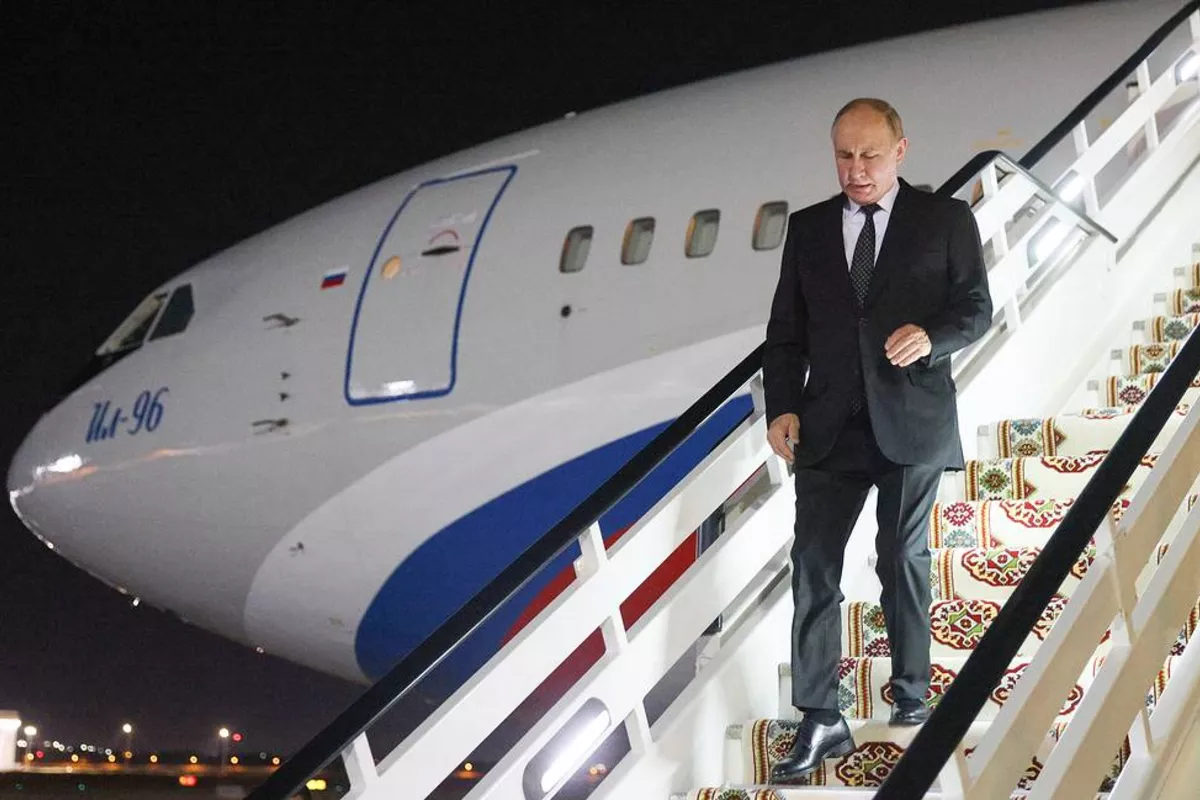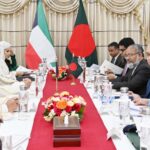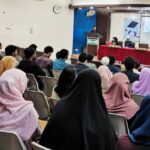
The Russian head of state held a meeting with Chukotka Regional Governor Vladislav Kuznetsov who told Putin about the economic and social situation in the region
ANADYR, August 16. /TASS/. Russian President Vladimir Putin has paid a working visit to the Chukotka Region in Russia’s Far East.
The Russian head of state held a meeting with Chukotka Regional Governor Vladislav Kuznetsov who told Putin about the economic and social situation in the region.
This is the Russian leader’s second visit to Chukotka during his terms in office, previously, he visited the region in January 2024.
Previously, the Russian leader visited Alaska for talks with his US counterpart Donald Trump. On the way back to Russia, Putin’s aircraft was escorted by US F-22 jets.
On August 15, a summit between Russia and the US took place at a military base in Alaska. The talks lasted more than three hours and included several formats: one-on-one in the American leader’s limousine en route to the main venue and in a small group of “three on three.” The Russian delegation included Kremlin aide Yury Ushakov and Foreign Minister Sergey Lavrov, while the US delegation included Secretary of State Marco Rubio and Trump’s special envoy Steve Witkoff.
Following the talks, Putin told the press that the settlement of the Ukrainian conflict was the main topic of the summit. The Russian leader also called for a new beginning in bilateral relations and a return to cooperation. He invited Trump to Moscow. For his part, the US president announced the progress achieved in the talks but noted that the two sides had not reached an agreement on everything.
IN BRIEF: Constructive and Useful Talks: What Putin Said after Meeting with Trump
Vladimir Putin suggested their next meeting be held in Moscow, and Donald Trump said it was possible, even though he would have to face strong criticism
ANCHORAGE /Alaska/, August 16. /TASS/. President Vladimir Putin of Russia and President Donald Trump of the United States have held closed-door talks in Alaska. The meeting, which began with a brief conversation on the red carpet on the tarmac in Anchorage, lasted over three hours.
Putin and Trump made statements to the media after the talks. Putin suggested their next meeting be held in Moscow, and Trump said it was possible, even though he would have to face strong criticism.
TASS has gathered the key takeaways from what the Russian president said.
Russia-US relations
– The talks with Trump were useful and constructive: “Our talks took place in a trustful and constructive atmosphere and were quite substantive and useful.”
– In recent years, Russia-US relations fell “to their lowest since the Cold War.” “As you know, Russia and the US have not held summits for over four years, which is a long time. That wasn’t an easy period in bilateral relations, which, let’s face it, fell to their lowest since the Cold War, which benefits neither our countries nor the world in general.”
– Russia-US trade started to grow under Trump, even though the growth rate is not high at this point. “Our trade started to grow after the new US administration came to power. So far, it’s merely symbolic, but it’s still a rise of 20%. I mean that we have a lot of promising areas for joint work.”
– Russia and the US have a lot to offer each other in various areas of cooperation. “Russia-US business and investment cooperation clearly has a lot of potential. Russia and the US have a lot to offer each other in trade, the energy sector, the digital industry, high technology and space exploration. Arctic cooperation also looks relevant, as well as the resumption of interregional ties, particularly between Russia’s Far East and the US West Coast.”
Ukraine settlement
– The agreements reached in Alaska “will be the starting point for resolving the Ukraine issue” and improving Russia-US relations.
– Russia has always seen the people of Ukraine as brotherly and the current developments as tragic and painful.
– Russia is interested in putting an end to the Ukraine crisis: “Our country is sincerely interested in ending it all.”
– Russia is ready to work to ensure Ukraine’s security: “I agree with President Trump – he has spoken about it today – that Ukraine’s security also needs to be ensured. We are certainly ready to work on that.”
– The understanding reached with Trump will pave the way for peace in Ukraine, the Russian leader hopes.
– The conflict in Ukraine would have never started had Donald Trump been the president of the United States in 2022. “I remember that during my last contact with the previous [US] administration in 2022, I tried to convince my then American counterpart that the situation should not be brought to the point of no return, where it would come to hostilities. And I said it quite directly back then that it’s a big mistake. Today, when President Trump says that if he had been president, there would have been no war, I’m quite sure that’s the way it would have been. I can confirm that.”
– An end to the conflict in Ukraine is secured “the sooner the better.”
On good-neighborly relations
– Holding a Russia-US summit in Alaska is logical because the two counties are neighbors: “It’s quite logical to meet here because our countries are close neighbors despite being separated by oceans.”
– Russia is grateful to the US for its respect for the memory of the Soviet soldiers buried in Alaska. “Soviet pilots who died during their heroic mission (while flying aircraft from the US to the Soviet Union under the Lend-Lease Program – TASS) are buried in a military cemetery just a few kilometers from here. We are grateful to the US authorities and citizens for respecting their memory. This is noble and dignified behavior.
Trump Refrains from Escalating Pressure on Russia for At Least Some Time — Medvedev
“The Russian president presented our conditions for ending the conflict in Ukraine to the US leader in person and in detail,” the Deputy Chairman of the Russian Security Council said
MOSCOW, August 16. /TASS/. Deputy Chairman of the Russian Security Council Dmitry Medvedev identified US President Donald Trump’s refusal to increase pressure on Moscow over the situation in Ukraine as one of the outcomes of the Alaska summit.
“1. A full-fledged mechanism for high-level meetings between Russia and the US has been restored. It is peaceful, free of ultimatums or threats. 2. The Russian president presented our conditions for ending the conflict in Ukraine to the US leader in person and in detail. 3. Following nearly three hours of talks, the White House host has refused to escalate pressure on Russia. At least for now,” Medvedev wrote on his Telegram channel, summing up the meeting between Russian President Vladimir Putin and his US counterpart Donald Trump.
On August 15, a summit between Russia and the US took place at a military base in Alaska. The talks lasted more than three hours and included several formats: one-on-one in the American leader’s limousine en route to the main venue and in a small group of “three on three.” The Russian delegation included Kremlin aide Yury Ushakov and Foreign Minister Sergey Lavrov, while the US delegation comprised Secretary of State Marco Rubio and Trump’s special envoy Steve Witkoff.
Following the talks, Putin told the press that the settlement of the Ukrainian conflict was the main topic of the summit. The Russian leader also called for a new beginning in bilateral relations and a return to cooperation. He invited Trump to Moscow. For his part, the US president announced the progress achieved in the talks but noted that the two sides had not reached an agreement on everything.
OUTSIDE RUSSIA
Putin-Trump Summit Corners Ukraine Into Cutting Deal, Warns Off Europe From Meddling
The Alaska meeting between Vladimir Putin and Donald Trump showed signs of progress facilitated by the personal rapport between the two leaders—helping mend the rift left by the Biden era’s abrasive language, financial analyst Paul Goncharoff noted.
After the Russia-US summit, the heat is on Zelensky to “make a deal soon,” Paul Goncharoff, general director of Goncharoff LLC, told Sputnik.
War hawks in Europe “appeared to be partially warned off interfering” in US diplomatic efforts to resolve the conflict.
Goncharoff underscored that Donald Trump is in a position to “punish economically and militarily” both Ukraine and Europe unless they roll back some of their demands.
While progress was made and Russia’s position acknowledged, what happens next hinges on three factors:
Battlefield dynamics—further Russian advances and the potential collapse of Ukraine’s frontlines
Zelensky’s fate—increasingly shaky on the domestic front
Europe’s role—whether it chooses to intervene and prolong the conflict
A most likely scenario is the conflict ending with a Russian victory that would see Donbass secured, a buffer zone in place, and bring long-overdue elections in Ukraine—under security guarantees that bar NATO membership, according to the pundit..
“In short—Russia achieves its objectives over a conflict that Europe should never have become involved with and should always have remained a small regional issue for Moscow to deal with. Trump, it appears, has taken that on board,” Goncharoff said.
The Putin-Trump summit signals that the US has effectively “accepted Russia’s victory in Ukraine conflict,” Dr. Hriday Sarma, international affairs and energy geo-economics expert, told Sputnik.
The meeting that both leaders have hailed as “productive” underscored that Russia is indispensable to any peace process. With Ukraine excluded from the talks, the decisive conversation is between Russia and the US.
Western attempts to isolate Russia have failed, and Moscow retains centrality in global affairs and the world oil and gas market, added the pundit.
Beyond the US–Russia track, attention is shifting to the Shanghai Cooperation Organization (CSO) summit in Tianjin, China, where a potential meeting between India’s Prime Minister Narendra Modi and China’s President Xi Jinping could expand this new wave of high-level diplomacy across Eurasia, the expert said.
“The Alaska summit has confirmed Russia’s restored role as a central global powerbroker,” Sarma noted.
🚨📹 Trumps says meeting with Putin went so well that he won’t have to think about new secondary sanctions for another 2-3 weeks https://t.co/XiQPVUicn0 pic.twitter.com/BA7ywkH1ej
— Sputnik (@SputnikInt) August 16, 2025
The real achievement of the Putin-Trump Alaska meeting was proving that dialogue remains possible in tackling the challenges of a new world order, Tiberio Graziani, chairman at Vision and Global Trends – International Institute for Global Analyses, told Sputnik.
“It may even signal the dawn of a renewed era of diplomacy.”
The meeting left the impression that there is positive personal chemistry between the two leaders, the pundit noted. But whether the Putin-Trump summit becomes a springboard for real peace depends on clearing major hurdles, he explained.
The meeting rattled Europe’s war hawks, furious at being “excluded.” Trump still faces pushback from his own domestic opponents and European allies clinging to their “until victory” stance against Russia.
Rosatom in Talks with Iran on Possibility of Building Small Nuclear Power Plants
MOSCOW (Sputnik) – Russian state nuclear corporation Rosatom is in talks with Iran on the possibility of building small nuclear power plants (NPPs) in the country, Rosatom CEO Alexey Likhachev said on Friday.
“At the beginning of this year, Iranian partners came up with a proposal to expand the agenda from large units to small ones, including small modular reactors. Such negotiations are underway, and I hope that sooner or later agreements will be concluded,” Likhachev told the Rossiya 1 broadcaster.
SPECIAL MILITARY OPERATION IN UKRAINE
Russia Takes Control of Two Settlements in Special Op Zone
MOSCOW (Sputnik) – Russian armed forces took control of the village of Kolodezi in the Donetsk People’s Republic (DPR), the Russian Defense Ministry said on Saturday.
“Battlegroup Zapad, through decisive actions, liberated the village of Kolodezi in the Donetsk People’s Republic,” the ministry said in a statement.
Russia’s Battlegroup Vostok has taken control of the Voronoye village in the Dnepropetrovsk Region, the Russian Defense Ministry said.
“As a result of the active and decisive actions, units of the Vostok group of forces have liberated the Voronoye settlement of the Dnepropetrovsk Region,” the ministry added.
Russia’s Battlegroup Tsentr has eliminated over 400 Ukrainian soldiers over the past 24 hours, the Russian Defense Ministry said on Saturday.
“The losses of the Ukrainian armed forces amounted to over 400 servicepeople, four combat armored vehicles, including a US-made M113 armored personnel carrier and two Turkish-made Kirpi armored cars, five pickup trucks, as well as three field artillery guns,” the ministry said in a statement.
Russia’s Battlegroup Zapad has eliminated up to 230 Ukrainian fighters, a UK-made Mastiff armored vehicle, a Novator armored vehicle, 14 cars, three artillery pieces, four electronic warfare stations and four ammunition depots over the past 24 hours, the ministry said.
Russia’s Battlegroup Vostok has eliminated over 215 Ukrainian fighters, an armored combat vehicle, 11 cars and two electronic warfare stations, the ministry said.
Russia’s Battlegroup Sever has eliminated over 170 Ukrainian soldiers, three armored fighting vehicles, four cars, three field artillery pieces, including an US-made 155-mm M777 howitzer, an electronic warfare station, a counter-battery radar station, and ten ammunition and materiel depots, the ministry said.
Russia’s Battlegroup Yug has eliminated over 220 Ukrainian soldiers, an M113 armored personnel carrier, two US-made MaxxPro armored vehicles, a pickup truck, five field artillery guns, two electronic warfare stations, as well as an ammunition depot, the ministry said.
Russia’s Battlegroup Dnepr has eliminated over 80 Ukrainian fighters over the past day, an US-made HMMWV armored vehicle, ten cars, five electronic warfare stations, and five ammunition and materiel depots, the statement read.
Ukraine’s Soviet Arsenal Nearly Depleted, Kiev ‘Almost Entirely’ Reliant on Western Aid
MOSCOW (Sputnik) – Ukraine’s military has reached a critical turning point, transitioning from relying on its legacy Soviet and Russian artillery and rocket supplies to becoming almost entirely dependent on Western aid, the latest quarterly report of the Operation Atlantic Resolve revealed.
“As of this quarter, Ukraine had nearly exhausted its supplies of Soviet and Russian artillery and rocket ammunition, making the UAF [Ukrainian armed forces] almost entirely reliant on Western assistance,” the report released on Thursday said.
The report of the US Department of Defense’s ongoing mission to bolster the security of NATO allies and provide support to Ukraine also details persistent challenges in other critical areas.
Despite significant aid, Ukraine’s air defenses and its fleet of F-16 fighter jets remain insufficient to deal with missile and uncrewed aerial systems (UAS) attacks, which continue to inflict damage on Ukrainian infrastructure.
Fulfilling Ukraine’s air defense needs is further complicated by a global shortage of essential components, according to the Security Assistance Group-Ukraine (SAG-U), a US-led German-based command that coordinates military assistance to Ukraine. The global demand for these parts presents a significant challenge to the timely delivery of crucial defensive systems.
Russia believes that arms supplies to Ukraine are hindering the peace process in Ukraine and getting NATO allies directly involved in the conflict. Russian Foreign Minister Sergey Lavrov noted that any cargo containing weapons for Ukraine would become a legitimate target for Russia.
Russia Halt Ukraine’s Sapsan Missile Production Efforts
Russia has blocked the Ukrainian Sapsan ballistic missile system for a long time, Russia’s Federal Security Service (FSB) said on Thursday.
The joint efforts of the FSB and the Russian army have thwarted Ukraine’s plans to produce Sapsan ballistic operational-tactical missile systems for strikes deep into Russia, and inflicted fire damage on Ukrainian defense industry complex enterprises that produced these systems, the FSB said.
The coordinated actions of Russian security agencies have made it possible to prevent the threat of destroying targets deep in Russia and eliminate the technical base for the production of Ukrainian long-range ballistic missiles.
Check out Sputnik’s infographics showing potential targets of the Sapsan missile system:
INSIGHTS
Fyodor Lukyanov: A New Security Order Is on the Table in Alaska
Putin-Trump meeting recalls the stakes of German reunification
It has been a long time since a diplomatic event drew as much global attention as Friday’s meeting between the Russian and US presidents in Alaska. In terms of its significance for the international balance, it is comparable only to the negotiations on German reunification 35 years ago. That process laid the foundations for political developments in the decades that followed. The Alaska talks could prove a similar milestone – not just for the Ukraine conflict, but for the principles on which a broader settlement between the world’s leading powers might be reached.
Ukraine has become the most visible arena for historical shifts that go far beyond its borders. But if the German analogy holds, no one should expect a breakthrough from a single meeting. The marathon of high-level diplomacy in 1990 lasted many months, and the mood then was far less acute and far more optimistic than today.
The dense fog of leaks and speculation surrounding Alaska underlines its importance. Much of this “white noise” comes from two sources: commentators eager to sound informed, and political actors seeking to shape public opinion. In reality, the substantive preparation for the talks appears to have little to do with the propaganda framing. This is why official announcements so often catch outside observers by surprise.
That may be a good sign. In recent decades, especially in Europe, diplomacy has often been accompanied by a steady drip of confidential details to the press – a habit that may serve tactical purposes but rarely produces lasting results. In this case, it is better to wait for the outcome, or the lack of one, without giving in to the temptation to guess what will happen behind closed doors.
There is also a broader backdrop that cannot be ignored: the shifts in the global order catalyzed by the Ukraine crisis, though not caused by it. For years, I have been skeptical of claims that the world is dividing neatly into two opposing camps – “the West” versus “the rest.” Economic interdependence remains too deep for even sharp political and military conflicts to sever ties entirely. Yet contradictions between these blocs are growing, and they are increasingly material rather than ideological.
A key trigger was US President Donald Trump’s recent attempt to pressure the largest states of the so-called “global majority” – China, India, Brazil, and South Africa – to fall in line with Washington’s instructions. The old liberal order promised universality and some benefits to participants. Now, purely American mercantile interests dominate.
As before, Washington dresses its demands in political justifications – criticizing Brazil and South Africa over their treatment of the opposition, or attacking India and China over their ties with Moscow. But the inconsistencies are obvious. Trump, unlike his predecessors, prefers tariffs to sanctions. Tariffs are an explicitly economic tool, but they are now being wielded for political ends.
The attempt has failed to produce the outcome the White House wanted. The US president is used to allies compromising to preserve their relationship with Washington. BRICS countries, too, have often avoided confrontation for the sake of their own economic interests. But the bluntness of the American push this time forced them to stiffen their positions.
Ukraine, in itself, has little to do with this shift – but it is the issue commanding global political attention. Ahead of the Alaska summit, Russian President Vladimir Putin has been personally briefing BRICS and other key partners on the preparations. They are taking note, and in many cases expressing support for the process.
Across the Atlantic, consultations are equally intense, though marked by unease and limited trust. Western Europe’s anxiety that Trump might “cut a deal” with Putin is telling. The world is still dividing into groups, but while one group is moving towards greater coordination, the other is growing less cohesive.
Even if Alaska produces serious discussions, there is no guarantee it will deliver peace. It may not even be the final meeting. What is troubling is that the public debate remains focused on territorial carve-ups – who gets what, and what is given in exchange. This misses the core issue. The acute phase of the Ukraine crisis was not triggered by a hunger for territorial expansion. It began when Moscow challenged the security order that emerged after the Cold War – an order built on the open-ended enlargement of NATO as the supposed guarantor of European stability.
This is where the German reunification analogy returns. That plan, while it resolved a territorial question, also enshrined the political principles that shaped the post-Cold War system. Those same principles, and the imbalance they created between Moscow and Washington, lay at the root of the 2022 escalation. Borders and territories are only part of the picture. The real question is the basis for peaceful coexistence going forward.
In 1990, a settlement between East and West created the architecture of European security. But the way the Cold War ended – and the failure to give Moscow an equal stake – planted the seeds of today’s confrontation. In that sense, the Alaska meeting is an attempt to resolve unfinished business from the past. Without a final settlement of this historic imbalance, it will be impossible to create a stable new system of relations, not just between Russia and the West but globally.
The frequency of Putin’s meetings with BRICS leaders shows that Moscow understands this reality. Whether Washington does remains to be seen.
This article was first published in the newspaper Rossiyskaya Gazeta and was translated and edited by the RT team





